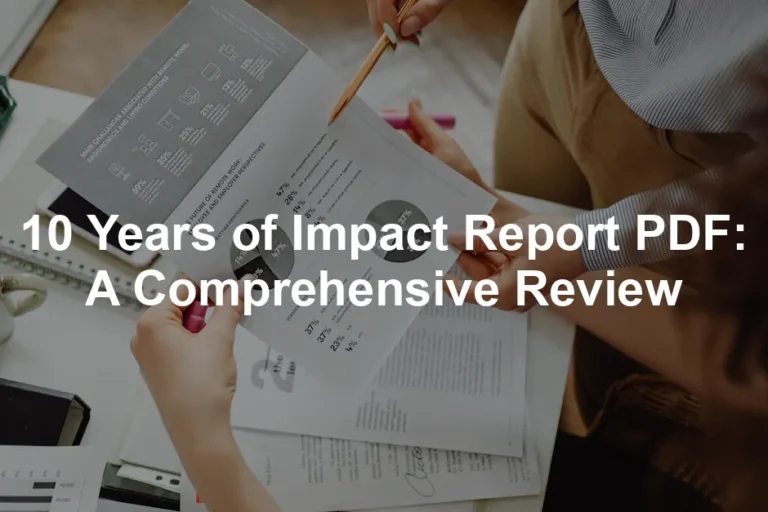Introduction
The AP Statistics Exam is a significant milestone for high school students. It opens doors to college credit and advanced placement opportunities. This exam tests students’ grasp on statistical concepts, making it crucial for aspiring statisticians, data analysts, and even future psychologists.
Understanding the exam format is fundamental for effective preparation. Why? Because knowing what to expect can alleviate anxiety and help you strategize your study sessions. With a clear idea of the structure, you can allocate your time wisely during practice tests and the actual exam.
This guide is your roadmap. It will provide you with comprehensive insights into the exam structure, scoring criteria, and effective preparation strategies. By the end, you’ll feel armed and ready to tackle the AP Statistics Exam with confidence.

This comprehensive guide will help you understand the AP Statistics Exam format and preparation strategies. AP Statistics Exam review
Exam Overview
The AP Statistics Exam is designed to assess your understanding of statistical concepts and methodologies. It plays a pivotal role in helping students earn college credit. Many colleges grant credit for scores of 3 or higher, depending on their AP credit policy. Thus, a solid performance can save you time and money in your college journey.
Mark your calendars: the AP Statistics Exam is set for May 8, 2025, at 8 AM local time. This is your chance to shine!
The total exam duration is three hours. This time is split between two sections: the multiple-choice and free-response sections. Each section lasts for 90 minutes, providing a balanced approach to testing your knowledge.
In summary, the AP Statistics Exam is not just a test; it’s a gateway to a world of academic opportunities. Understanding its purpose and logistics is your first step toward success.

Exam Structure
Section I: Multiple Choice
The first section of the AP Statistics Exam consists of 40 multiple-choice questions. You have a generous 90 minutes to tackle these questions. This section plays a significant role in your overall score, accounting for 50% of the total points.
Now, you might be wondering how to ace this section. It’s all about strategy! With each question carrying equal weight, your goal is to answer as many correctly as possible. Plus, there’s no penalty for guessing. So, if you’re unsure, just take a shot!

Question Types
The multiple-choice questions come in two flavors: standalone questions and sets based on shared prompts. Each question presents five possible answers, but only one is correct.
Expect a mix of topics, including exploratory data analysis, probability, and statistical inference. These questions require a solid understanding of the concepts covered throughout your AP Statistics course.
Feeling overwhelmed? Don’t fret! A little practice can go a long way. Familiarize yourself with the question format, and you’ll be cruising through this section in no time.
Section II: Free Response
The second section of the exam includes 6 free-response questions, also with a time limit of 90 minutes. Like the multiple-choice section, this part contributes to the remaining 50% of your total score.
While it may seem daunting, this section allows you to showcase your understanding of statistical concepts in a more detailed manner. Here, clarity and reasoning are key!
Part A: Short Answer Questions
Part A is where the real fun begins! Expect five short-answer questions, each focusing on different aspects of statistics. Here’s what you might encounter:
- Data Collection: Demonstrating your ability to plan and conduct surveys or experiments.
- Data Exploration: Analyzing datasets and summarizing findings.
- Probability and Sampling Distributions: Applying probability rules and understanding sampling behavior.
- Inference Questions: Making predictions or generalizations based on sample data.
- Combining Skills: Some questions may require you to integrate knowledge from multiple skill categories.
These questions can be tricky, so practice answering them in a clear, concise manner.

Part B: Investigative Task
Part B features one investigative task, which is often the crown jewel of the free-response section. This question requires you to apply multiple statistical skills in a real-world context. You’ll analyze a dataset, interpret results, and justify your conclusions.
This task is designed to push your critical thinking and analytical abilities to the limit. So, take your time to understand the scenario presented and make sure to communicate your reasoning effectively.
With both sections of the exam structured to test your understanding and application of statistical concepts, mastering the exam format is crucial. Practice makes perfect! So, grab those practice questions and dive into your studies. You’ve got this!

AP Calculator Policy
When it comes to the AP Statistics Exam, calculators are your trusty sidekicks. You can use a four-function, scientific, or graphing calculator with statistical capabilities. This policy ensures that you have the tools necessary to tackle the quantitative challenges that lay ahead. However, keep in mind that calculators with certain unapproved features, like symbolic algebra or computer algebra systems, are strictly off-limits.
So, what types of calculators should you pack in your exam bag? A scientific calculator is a great choice, while a graphing calculator like the TI-84 Plus CE Graphing Calculator can work wonders for visualizing data and performing complex computations. Just make sure you know how to operate your calculator like a pro.
Calculator proficiency is essential for both exam sections. In the multiple-choice portion, you’ll encounter questions that require quick calculations and data interpretations. The calculator can save you precious time here. But don’t get too reliant! Practice using it effectively so you can be swift and accurate, avoiding the dreaded calculator conundrum.
In the free-response section, the stakes are even higher. You’ll need to justify your calculations and provide clear explanations for your reasoning. A calculator can help you arrive at answers, but the grading rubric focuses on your thought process. Make sure to show your work, as partial credit can significantly boost your score!
In summary, familiarize yourself with your calculator, understand the limits of what it can do, and practice solving problems efficiently. By mastering these skills, you’ll be well-equipped to tackle the AP Statistics Exam and emerge victorious.

Scoring Information
Overview of Scoring
The AP Statistics Exam employs a scoring scale from 1 to 5, with each score reflecting a student’s grasp of statistical concepts. A score of 5 indicates an exceptionally qualified student, while a 1 suggests a lack of understanding. Colleges often grant credit for scores of 3 or higher, but policies can vary. Therefore, it’s wise to check the specific requirements of your prospective colleges.
In recent years, exam performance statistics provide a clearer picture of how students fare. For instance, in 2022, approximately 14.8% of test-takers scored a 5, while 22.2% received a score of 4. Meanwhile, 23.4% achieved a score of 3, indicating that a sizable portion of students demonstrated solid proficiency. However, not every student embarked on this journey unscathed; 16.5% scored a 2, and 23.1% received a 1. These statistics highlight the importance of thorough preparation, as every point can make a difference.

Scoring Breakdown
Understanding how each section contributes to your overall score is crucial. The AP Statistics Exam consists of two parts: multiple-choice and free-response. The multiple-choice section comprises 40 questions, accounting for 50% of your total score. Each correct answer adds to your score, while incorrect answers don’t incur any penalties. This means guessing can be a viable strategy if you’re unsure!
The free-response section consists of 6 questions, also contributing 50% to your overall score. Here, you have the opportunity to earn partial credit, which can significantly enhance your final result. For instance, if you demonstrate a solid understanding of a question but make a minor calculation error, you may still earn points for your reasoning and methodology.
To illustrate, let’s consider a free-response question that requires you to analyze a dataset. Even if your final answer is incorrect, if you correctly identify the steps needed to reach a conclusion—like stating the correct statistical tests to use—you could still earn valuable points.
This scoring system encourages students to approach each problem with a strategic mindset, maximizing their opportunities for success. By understanding how scores are calculated and focusing on both accuracy and methodology, you’ll be in a prime position to excel on the AP Statistics Exam.

Topics Covered in the Exam
The AP Statistics curriculum is a treasure trove of essential statistical concepts. Students must grasp a wide array of topics to succeed. Here’s a rundown of what you’ll encounter, ensuring you’re well-prepared for the exam.

Exploring One-Variable and Two-Variable Data
The journey begins with one-variable data. Here, you’ll learn to summarize and visualize data effectively. Expect to encounter various graphical displays like histograms and box plots. Understanding measures of center and spread is crucial. Then we shift gears to two-variable data. This section dives into correlation and regression, allowing you to explore relationships between variables. Think of it as the matchmaking segment of statistics!

Collecting Data
Next up, data collection! This unit emphasizes the importance of designing surveys and experiments. The goal? To gather data that’s reliable and valid. You’ll study sampling methods and the significance of randomization. After all, nobody wants their conclusions based on biased data, right? Understanding how to collect data properly sets the foundation for all statistical analysis. Equip yourself with a Graph Paper Notebook to sketch out your data collection strategies!

Probability and Sampling Distributions
Onward to probability! This intriguing topic reveals the secrets behind random events. You’ll explore probability rules, random variables, and distributions. Wait, there’s more! Sampling distributions come into play, too. You’ll learn how these distributions help in making inferences about populations. The Central Limit Theorem will be your guiding star here, providing insights into the behavior of sample means.

Understanding the Central Limit Theorem is crucial for making inferences about populations based on sample data. The Central Limit Theorem is important in statistics because
Inference for Categorical and Quantitative Data
Finally, let’s talk inference! This section covers how to draw conclusions from sample data. You’ll learn to construct confidence intervals and conduct hypothesis tests. Expect to tackle both categorical and quantitative data. For categorical data, you’ll dive into proportions and chi-square tests. When it comes to quantitative data, means and slopes take center stage. This knowledge is key to making educated decisions based on statistical analysis.
Throughout the exam, you’ll notice that concepts from all nine units are interwoven. Each question is designed to assess your understanding across these areas. The exam doesn’t just test rote memorization; it seeks to evaluate your ability to apply statistical reasoning in various contexts.

Preparation Strategies
Getting ready for the AP Statistics exam requires a smart approach. Let’s break down some effective strategies to ensure you’re on the path to success.
Study Resources
First off, gather your study materials. Reliable textbooks are a must. Look for ones specifically designed for AP Statistics. Online resources can also be a game-changer. Websites like Khan Academy provide free courses and practice questions. Don’t forget about past exam questions! These gems offer insights into the exam format and frequently tested topics. They’re like a sneak peek into the mind of the exam writers!
To further enhance your preparation, consider investing in an AP Statistics Prep Book that aligns with the latest exam format!

Study Techniques
Now, let’s discuss study techniques. Creating summary notes is an excellent way to condense information. Focus on key concepts and formulas. Practice quizzes are another fantastic tool. They help reinforce what you’ve learned and highlight areas needing improvement. Study groups can also work wonders. Collaborating with peers fosters discussion and understanding.
Utilizing AP Daily and Khan Academy resources is a smart move. These platforms offer targeted lessons that align with the exam’s content. Watching videos and completing exercises can solidify your understanding of tricky topics. And don’t forget to keep your study space organized with a Desk Organizer to keep your materials at hand!
Exam Day Tips
As exam day approaches, keep these practical tips in mind. First, manage your time wisely during the exam. Allocate specific time blocks for each section, ensuring you don’t rush through or linger too long on one question. Familiarize yourself with the question format beforehand. Knowing what to expect can ease anxiety.
Finally, don’t underestimate the importance of reviewing your answers when time permits. Mistakes can happen, and a second glance might just save you those precious points. Remember to stay calm, trust your preparation, and give it your best shot!
With these strategies in your toolkit, you’ll be well-equipped to tackle the AP Statistics exam head-on. Good luck!
Conclusion
The AP Statistics Exam format serves as the backbone of your preparation journey. This comprehensive exam is divided into two sections: the multiple-choice and the free-response, each accounting for 50% of your total score. Understanding the structure of the exam is essential for efficient study habits.
In the multiple-choice section, you’ll encounter 40 questions to tackle within 90 minutes. This part tests your grasp of various statistical concepts, from exploratory data analysis to inference. The free-response section also spans 90 minutes and consists of 6 questions, including an investigative task. Here, you can showcase your analytical skills in a more detailed manner.
Knowing the format can significantly enhance your performance. It helps you allocate your study time effectively, ensuring you’re well-prepared for each type of question. A strategic approach to preparation can lead to greater confidence on exam day, allowing you to face the questions head-on without panic.
So, take a proactive approach! Create a study schedule that targets both sections of the exam. Practice with past exam questions and familiarize yourself with the types of prompts you’ll see. By understanding the exam structure, you’re setting yourself up for success.
Remember, achieving a high score not only reflects your statistical knowledge but also opens the door to potential college credits. The journey may seem daunting, but with the right preparation and mindset, you can excel.
FAQs
What is the format of the AP Statistics exam?
The AP Statistics exam is divided into two main sections: the multiple-choice section and the free-response section. The multiple-choice section contains 40 questions and lasts for 90 minutes, counting for 50% of your total score. The free-response section has 6 questions, also with a 90-minute limit, contributing the remaining 50% to your score.
How is the AP Statistics exam scored?
The exam is scored on a scale of 1 to 5. Each correct answer in the multiple-choice section earns you one point, with no penalties for incorrect answers. The free-response section is scored based on a rubric, allowing for partial credit. Generally, a score of 3 or higher is considered passing and may earn you college credit.
What resources are available for preparation?
Numerous resources exist for effective prep. Recommended textbooks include “Barron’s AP Statistics” and “The Princeton Review AP Statistics.” Online platforms like Khan Academy offer free video lessons and practice exercises tailored for the exam. Past AP Statistics exam papers are also invaluable for familiarizing yourself with the question format and content.
When is the AP Statistics exam?
The AP Statistics exam is scheduled for May 8, 2025, at 8 AM local time. Be sure to mark your calendar and keep an eye on registration deadlines to ensure you’re ready to take the exam.
What calculator should I use for the exam?
A four-function, scientific, or graphing calculator with statistical capabilities is permitted during the exam. The TI-84 is a popular choice among students, as it can handle various statistical calculations and graphing needs. Ensure you’re comfortable using your calculator to maximize its potential during the exam.
Please let us know what you think about our content by leaving a comment down below!
Thank you for reading till here 🙂
All images from Pexels




